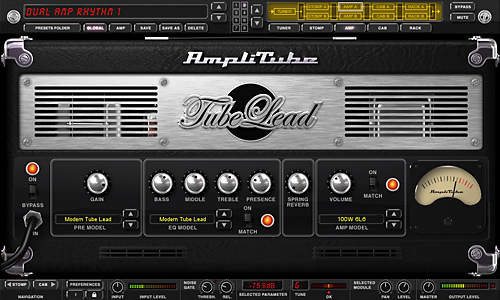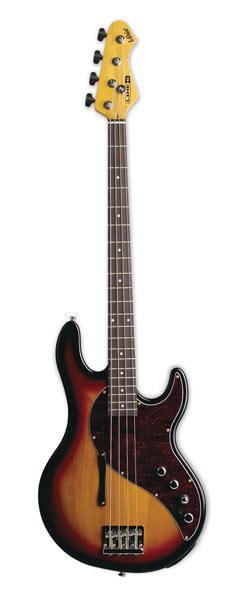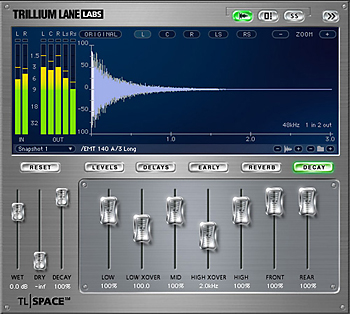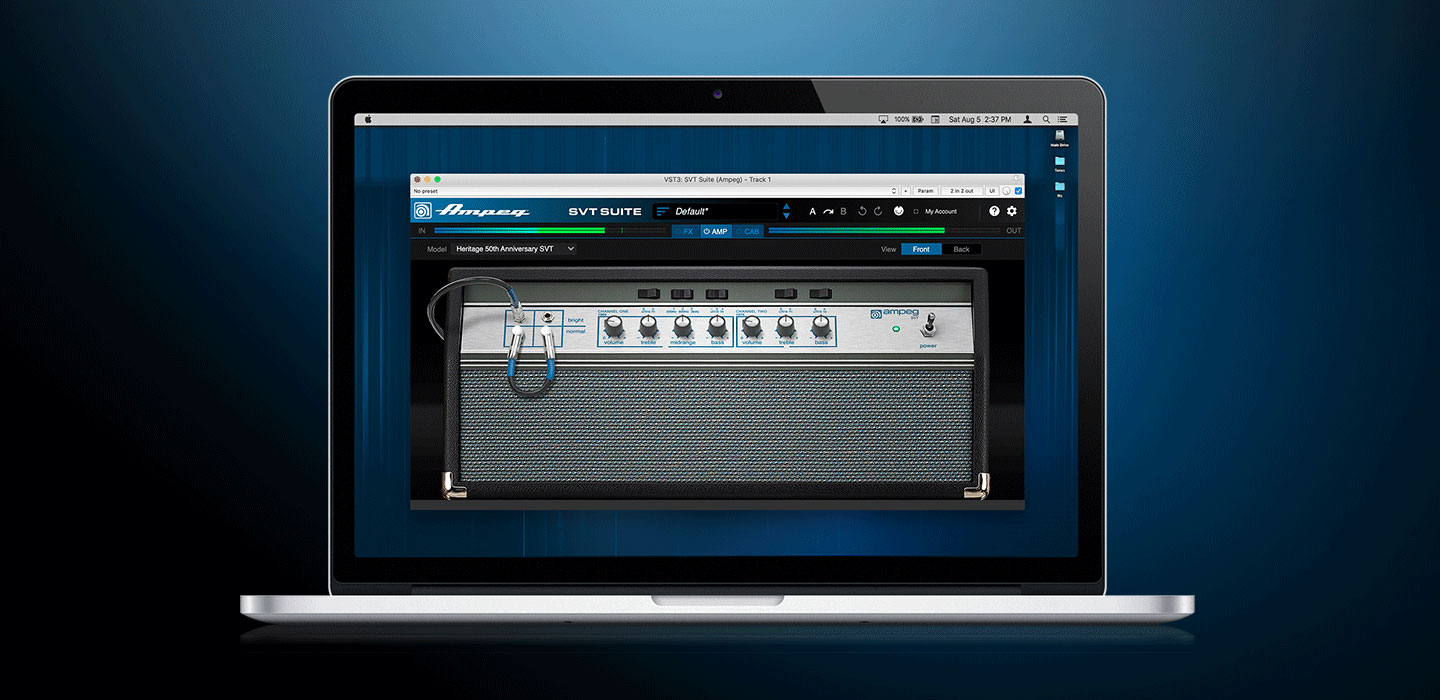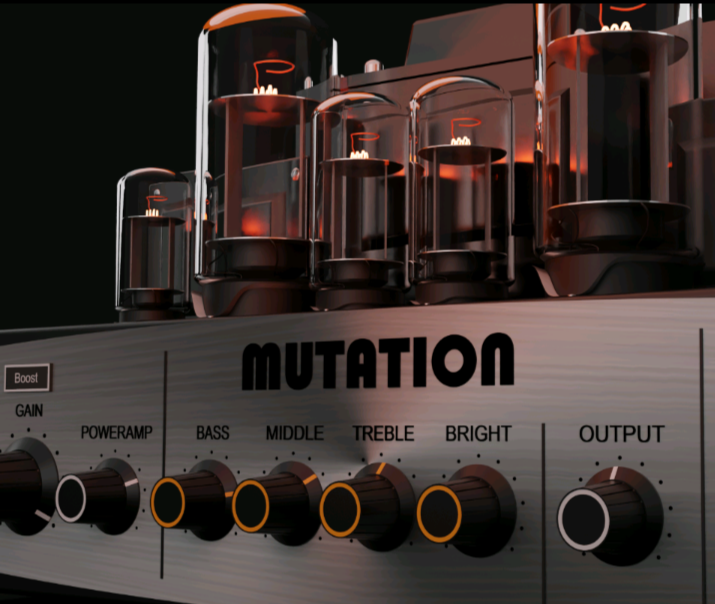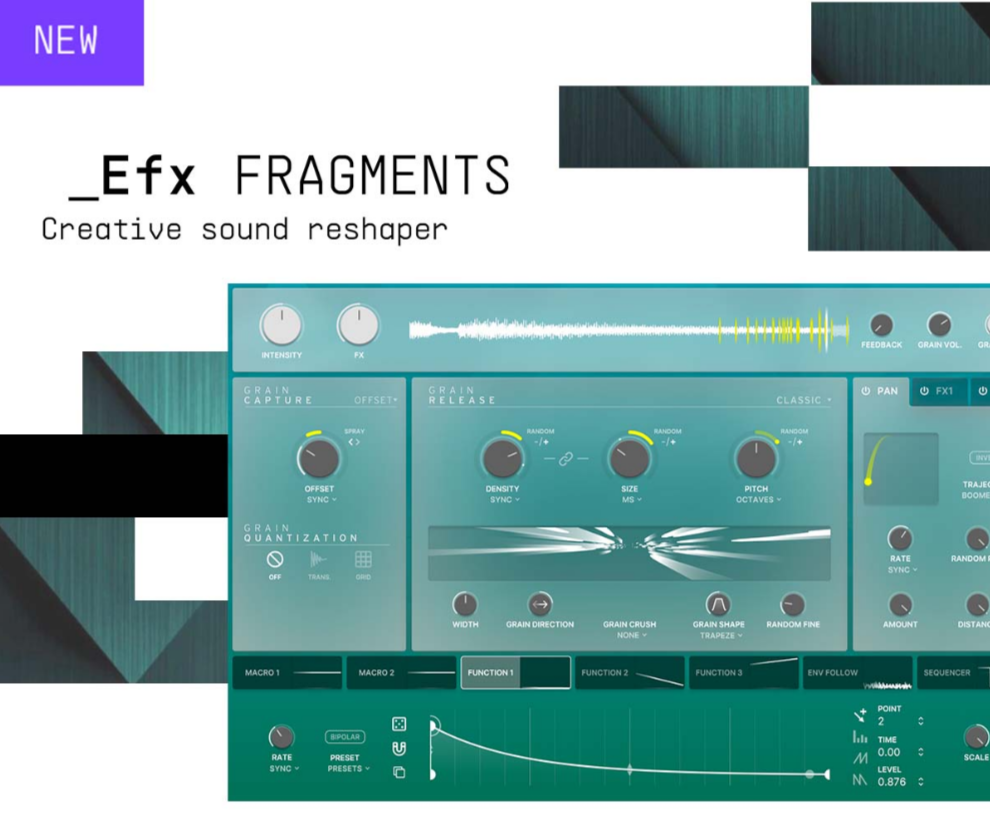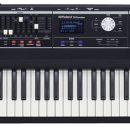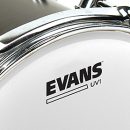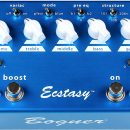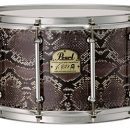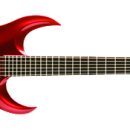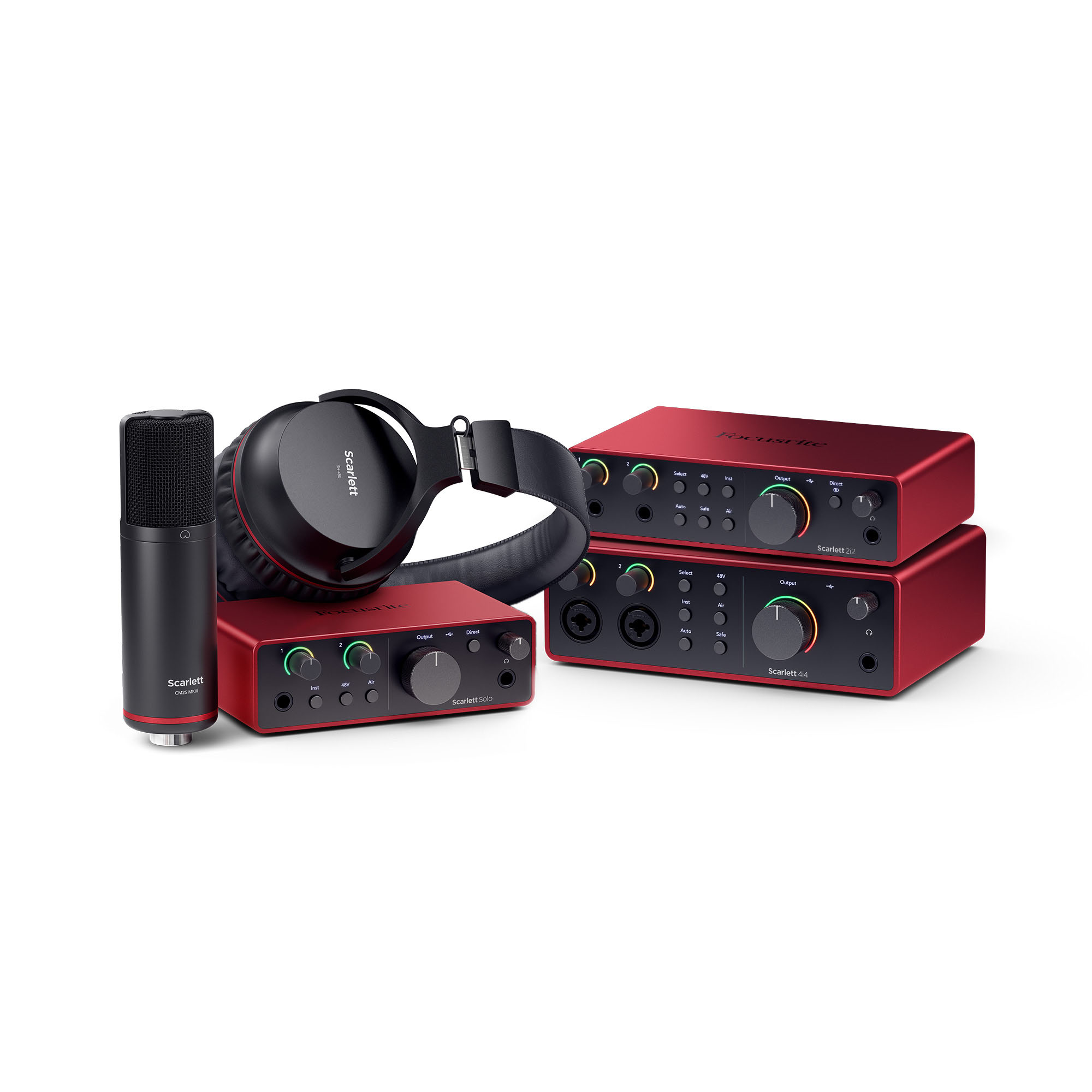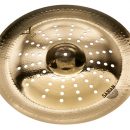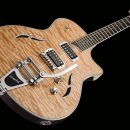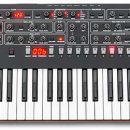Overall Rating - Product Summary
| Category | Value | Rating |
| Features | 20% | |
| Usability | 25% | |
| Sound | 25% | |
| Documentation & Support | 10% | |
| Price | 20% | |
|
|
||
| OVERALL RATING = 3.3
3.6 stars or better: Outstanding, WIHO Award |
||
Every year, it seems that modeling technology gets a little bit more realistic sounding. IK Multimedia’s original AmpliTube was a popular plug-in that provided some good amp modeling and effects but didn’t send us racing to pick up a copy. The sequel, AmpliTube 2, is another story. It features a completely revamped user interface and significantly improved features, sounds, and effects.
For the uninitiated, AmpliTube 2 provides great-sounding models of a variety of popular amps and effects. Everything, from full stacks to small combos, from vintage pedals to rack-mounted digital processors, is included. AmpliTube 2 goes even further though, providing numerous “recording” options for your virtual guitar amps through a choice of different modeled microphones and mic placement options.
Want to be your own amp designer? One of the coolest features in AmpliTube 2 is its ability to let you create your own amplifiers and rigs. You can mix and match the pre-amp, EQ, and power amp sections from different amps, as well as choose from numerous speaker cabinet choices. You can also run two amp rigs (complete with effects) in series or parallel.
Different parts of the signal chain can be disabled, useful if you have a good guitar tone from your amp and want to use AmpliTube 2 just for effects, or perhaps as an effect plug-in for non-guitar instrument sources. C’mon, everyone wants to run some lead vocals through a tube screamer into a 6” speaker, don’t they?
Overall, we were very impressed with the sound quality. Although no amp models from any company truly capture the depth of tone generated by real tubes pushing large speakers, AmpliTube 2 generates very usable guitar sounds that will sound great when layered in a mix. It is also a great tool to use for practice, pre-production and sonic experimentation, and for developing new song ideas.
A guitar player who hasn’t embraced computer-based recording may find AmpliTube 2’s numerous options a bit overwhelming at first, but others will feel right at home with the straight-forward interface.
In the studio, almost all of AmpliTube 2’s features can be automated, but be warned that as with other modeling-based plug-ins, operation of AmpliTube 2 is processor-intensive. You’ll want to run this on a high-end system for best results.
Features
![]()
AmpliTube 2 is not a stand-alone application. RTAS, VST, and AU format plug-ins are provided to run it from within your favorite host application. An iKey USB dongle is included in the box for product authorization.
AmpliTube 2 is comprised of modules strung together in the following order: Tuner, Stomp Effects, Amp, Cabinet, and Rack Effects. Within each module (other than the simple Tuner), you have numerous options for customizing your sound.
There are a variety of amps in AmpliTube 2. While they carry reference names in the software such as “American Tube Clean1” or “British Tube 30TB,” an included list of models reveals the source amplifiers used including a Fender Bassman and Super Reverb, Marshall JCM800 and 900, Mesa/Boogie Dual Rectifier, Vox AC30, and others.
Stomp effects are modeled on equipment such as the Ibanez Tube Screamer TS-9, Electro Harmonix Memory Man, MXR Phase 100, Boss CE-1 Chorus, and more.
There are numerous speaker cabinets from the likes of Marshall, Mesa/Boogie, Fender, and VHT, to name a few. Microphones for capturing their sound include models of the Shure SM-57, Neumann U-87, and a few others.
AmpliTube 2 includes numerous presets to help you get a feel for the product, and we found it extremely helpful to audition many of the supplied guitar rigs. Some are traditional amp setups while other presets offer recreations of various classic guitarists’ signature tones. All of these can be used as starting points for you to create your own custom sounds, which can be saved easily for future recall.
Usability
![]()
Installation on our Power Macintosh G5 running Pro Tools 7.1 LE was straightforward and the RTAS version of the plug-ins were automatically installed in our Digital Audio Workstation (DAW). The included iKey USB dongle must be used for initial product authorization as it includes a pre-installed license but, after the installation, we were able to easily transfer the license to another iKey already in use on our system with other IK Multimedia products.
Running AmpliTube 2 was as simple as adding a plug-in to an audio track in Pro Tools LE. By default, a clean guitar tone was loaded, and it was easy for us to choose from a variety of preset amp rigs or to immediately start customizing the amp on our channel.
The user interface in AmpliTube 2 is both beautiful and functional. Each module provides a graphically rich visualization of the equipment at hand – amplifiers, tuner, stomp boxes, rack modules, etc. We had no trouble adjusting knobs on any of the amps and effects with our mouse.
Complexity came in the form of setting levels (this is the part that will drive non-engineering oriented guitar players crazy). First, it’s essential that you have a good audio signal coming into your DAW. Instrument inputs are desired; regular line inputs should not be used.
The AmpliTube 2 interface provides input and output gain levels that we adjusted to get suitably hot (but not distorted) signals into the preamp stage and output that didn’t clip the actual track’s peak levels. Changing pickup selections such as moving from hot humbuckers to lower-output single coils or switching guitars often times required making minor adjustments to our overall signal levels. An auto-leveling feature would have been handy, particularly for use when auditioning sounds.
It was very easy to select amps. By default, selecting a preamp includes the associated EQ and power amp sections, but if we turned Off the “Match” switches, we could then select EQ sections from other amps and power amp sections from other amps as well.
While any module in AmpliTube 2 can be bypassed (e.g., Amp, Stomp, Speaker), we would love the option to bypass only the preamp and EQ sections (but keep the power amp) so that we could run our expensive rack-mounted guitar preamps and Line Out signals from amp heads into AmpliTube 2 and pair them with modeled tube power amps and cabinet emulators.
Up to six pedals per guitar rig can be connected in the Stomp module, and we had no trouble using a variety of classic effects. For the truly pedal-obsessed, you can route both sets of pedal chains together for twelve pedals of sonic mayhem. Because we didn’t have a hardware controller such as IK Multimedia’s StompIO available for testing, we weren’t able to make physical use of the Wah module, but setting the Wah to “Auto” mode worked nicely.

The speaker module enabled us to select speaker cabinets, make microphone selections, and adjust the mic placement On- or Off-axis. It also let us change the mic placement from Near to Far, and dial in room ambience to taste.
The Tuner module looked just like a traditional rack-mounted pro tuner, and if you’re not happy to have your “A” at 440 Hz, go ahead and change it, but we liked it where it belonged. A miniature representation of the tuner appeared in AmpliTube 2’s main window, so the tuner was always handy if needed. Usually, we turned it Off to conserve resources.
There was very minor latency detected while playing. We could reduce it further by adjusting some of the AmpliTube 2’s preferences, but we weren’t able to eliminate it entirely. With that said, the latency wasn’t enough to negatively impact our playing, nor did it affect our ability to play patterns with digital delay lining up with our recorded tracks.
Sound
![]()
Did you skip ahead to the sound section? We thought so. On to the question of the hour – how does it sound?
In short, AmpliTube 2 sounds very good. The amp models offer excellent representations of numerous amps and speakers. We were able to dial in a wide range of tones and create new sounds previously impossible, thanks to the ability to easily mix and match parts of the signal chain with each other.
The speaker module has a huge impact on the sound of AmpliTube 2. If you’re not thrilled with the sound of a particular amp model, make adjustments here before moving on to another amp. We found huge differences in our tone based on selection of different speakers and different mics.

We loved the sound of the various 4x12 closed-back cabinets, especially with Off-axis SM-57s being used for close-miking with a little bit of room ambience.
Our next dream product: IK Multimedia should release a scaled-down cabinet simulation plug-in that is purely focused on speaker cabinets with different microphonic treatment. Why? Because they did such a fantastic job in this module!
The amp models were very good sounding to us and quite useful for many applications including recording new and original guitar parts, recording additional layers of sound to thicken up a mix, and rehearsing and demoing song ideas, to name a few.
For tone-obsessed guitar freaks, AmpliTube 2 makes an outstanding pre-production tool for conceptualizing your guitar sounds. We think it’s far easier to test how a Marshall stack on one side and Vox combo on the other side sound through AmpliTube 2 as opposed to actually setting up multiple guitar rigs, miking them up, and so on. For recording purposes, you may even find yourself leaving these modeled sounds in your finished product.
The pedal models and digital effects were well implemented and sounded good. The harmonizers tracked our playing very well and stomp boxes provided a wide range of classic sounds. We recorded some mostly-dry guitar tones, bypassed the amp module and just used AmpliTube 2 for post-processing effects, but we couldn’t easily place the stomp boxes in front of our signal chain.
Theoretically, we could run our instrument cable into the computer, run our guitar signal through the virtual stomp boxes, route the track output to an auxillary output in our Digidesign hardware, and then send that signal to our guitar amp. We could then record the miked guitar sound to another track, and we would still have our clean guitar sound on the first track, thus enabling us to experiment with numerous re-amping techniques either with or without use of AmpliTube 2.
Is AmpliTube 2 an amp killer? Not quite. It sounds great through our studio monitors, but physics prevent your monitor mixes from capturing the depth of sound that is experienced from a physical tube amp driving large speakers. When placed in a mix, though, even tube purists may not realize that they’re listening to modeled amps.
As a sound source for our guitar rig, we’re not ready to trade in our tube amps for a laptop. But, as an additional tool in your guitar recording arsenal, AmpliTube 2 sounds really good, inspires creative experimentation, and… it’s just plain fun to use!
Documentation and Product Support
![]()
IK Multimedia did a great job of explaining the use of AmpliTube 2. Everything from signal optimization to detailed model explanations are provided, and a useful reference for signal routing is also provided in the actual software (not just in the printed User Manual).
Our first call to technical support took far too long for a return call – two days – but support had the answers we needed (related to licensing with the iKey) and they also provided a tip or two for saving our own custom sounds.
Price
![]()
AmpliTube 2 (MSRP $399) sells for approximately $320. We think it’s a fair price for the software. Upgrades for existing Amplitube users are available for even less and should be considered a must-have upgrade.
Contact Information
IK Multimedia
www.amplitube.com
www.ikmultimedia.com

